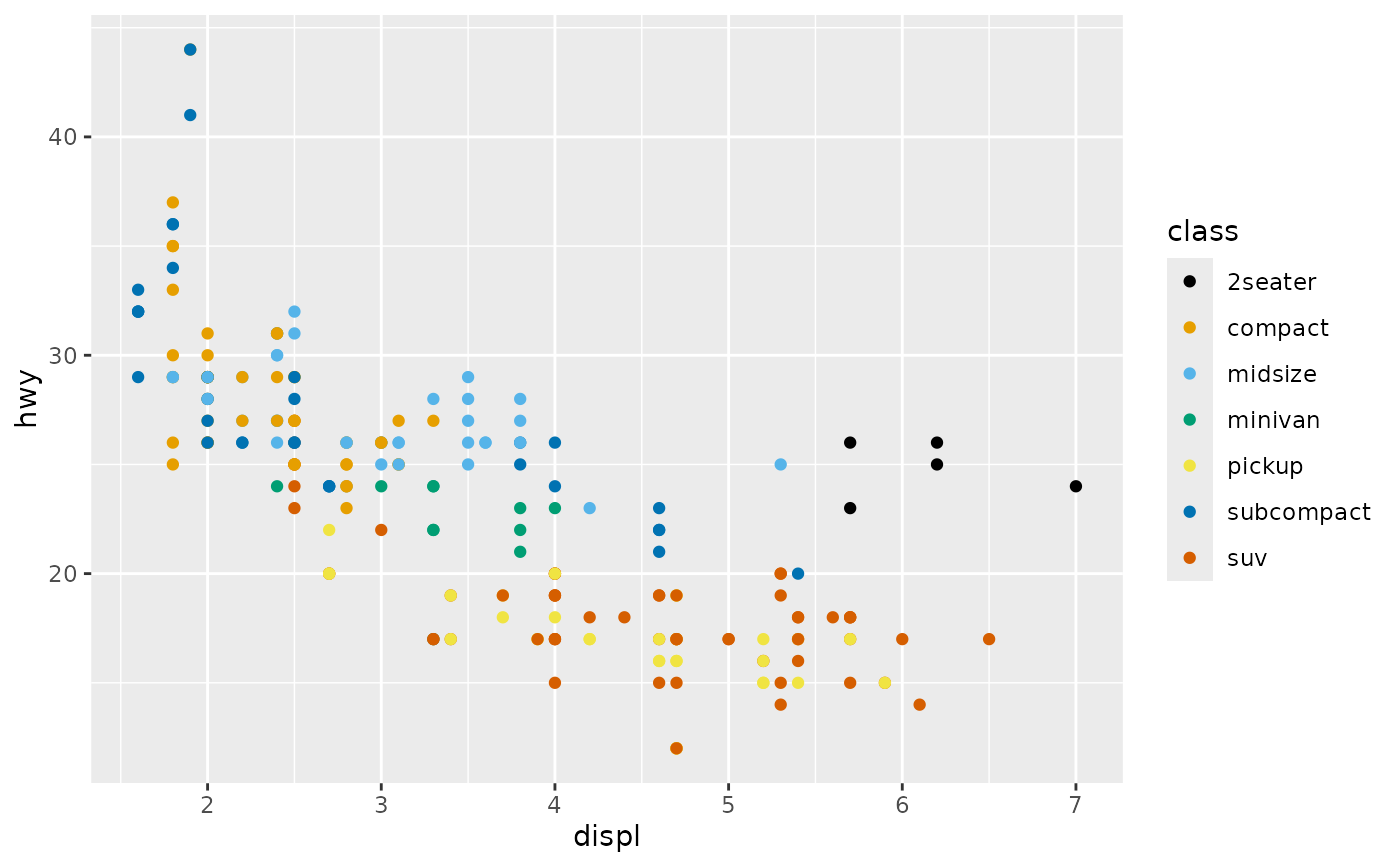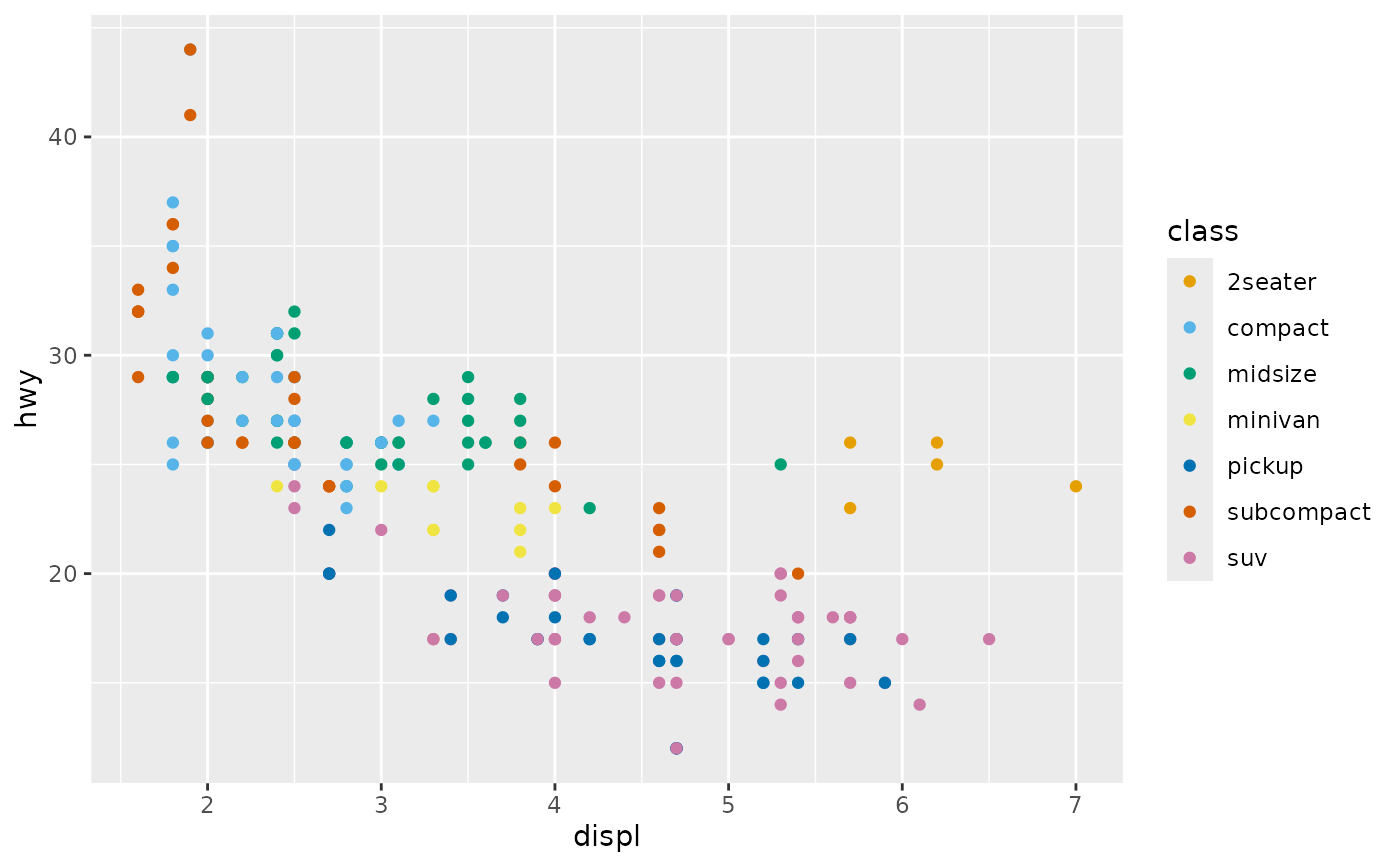
Okabe and Ito's Discrete Color Scheme for ggplot2 and ggraph
Source:R/scale_colour_okabeito.R
scale_okabeito_discrete.RdProvides the qualitative color scale from Okabe and Ito 2008.
Usage
scale_colour_okabeito(
...,
reverse = FALSE,
black_position = c("first", "last"),
aesthetics = "colour"
)
scale_color_okabeito(
...,
reverse = FALSE,
black_position = c("first", "last"),
aesthetics = "colour"
)
scale_fill_okabeito(
...,
reverse = FALSE,
black_position = c("first", "last"),
aesthetics = "fill"
)
scale_edge_colour_okabeito(
...,
reverse = FALSE,
black_position = c("first", "last"),
aesthetics = "edge_colour"
)
scale_edge_color_okabeito(
...,
reverse = FALSE,
black_position = c("first", "last"),
aesthetics = "edge_colour"
)
scale_edge_fill_okabeito(
...,
reverse = FALSE,
black_position = c("first", "last"),
aesthetics = "edge_fill"
)Arguments
- ...
Arguments passed to
ggplot2::discrete_scale().- reverse
A
logicalscalar. Should the resulting vector of colors be reversed?- black_position
A
characterstring giving the position of the black color. It must be one of "first" or "last". Any unambiguous substring can be given.- aesthetics
A
characterstring or vector of character strings listing the name(s) of the aesthetic(s) that this scale works with.
Value
A discrete scale.
Details
This qualitative color scheme is used as given (no interpolation): colors are picked up to the maximum number of supported values (8).
References
Okabe, M. & Ito, K. (2008). Color Universal Design (CUD): How to Make Figures and Presentations That Are Friendly to Colorblind People. URL: https://jfly.uni-koeln.de/color/.
Examples
library(ggplot2)
ggplot2::ggplot(mpg, ggplot2::aes(displ, hwy, colour = class)) +
ggplot2::geom_point() +
scale_colour_okabeito()
 ggplot2::ggplot(mpg, ggplot2::aes(displ, hwy, colour = class)) +
ggplot2::geom_point() +
scale_colour_okabeito(black_position = "last")
ggplot2::ggplot(mpg, ggplot2::aes(displ, hwy, colour = class)) +
ggplot2::geom_point() +
scale_colour_okabeito(black_position = "last")
